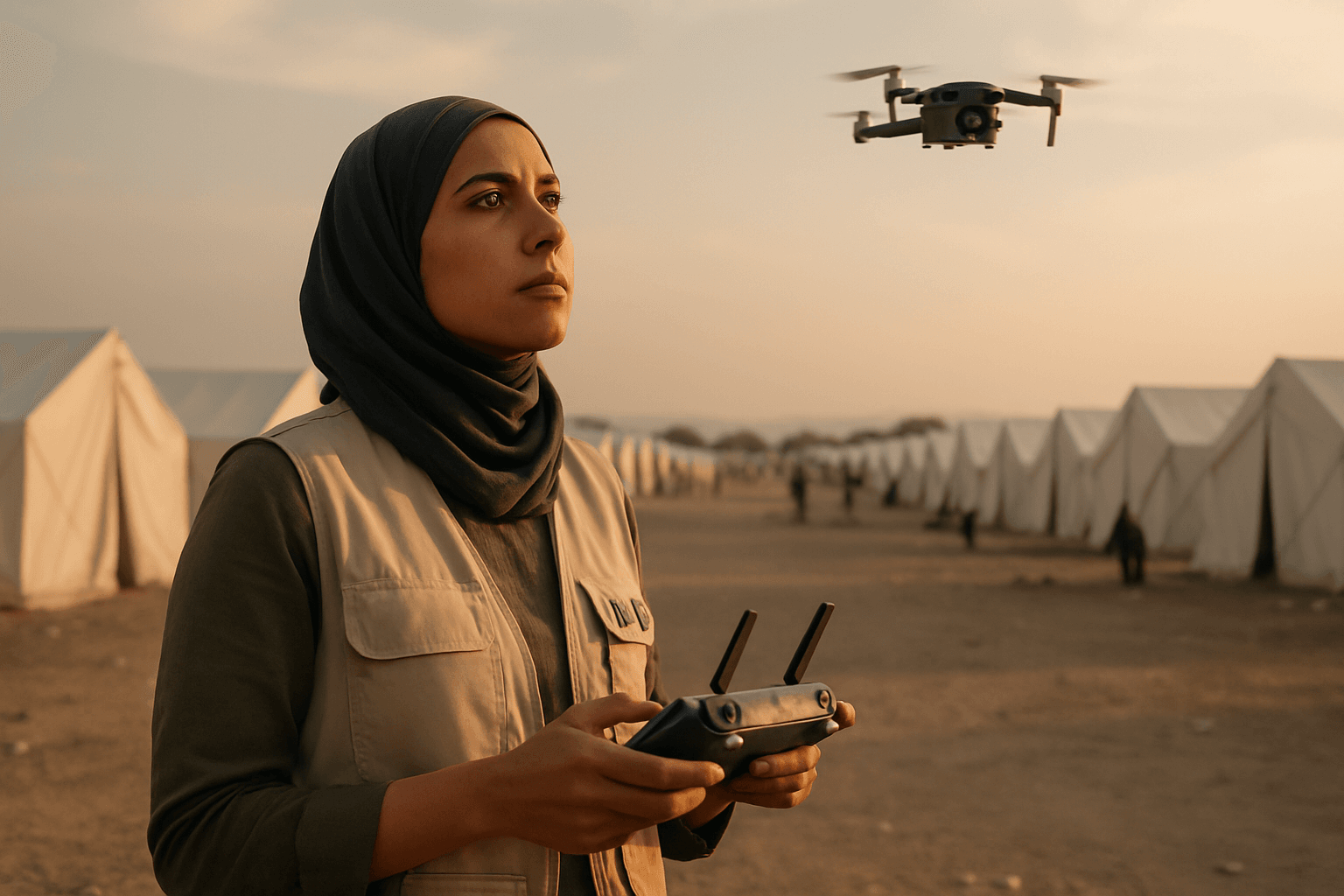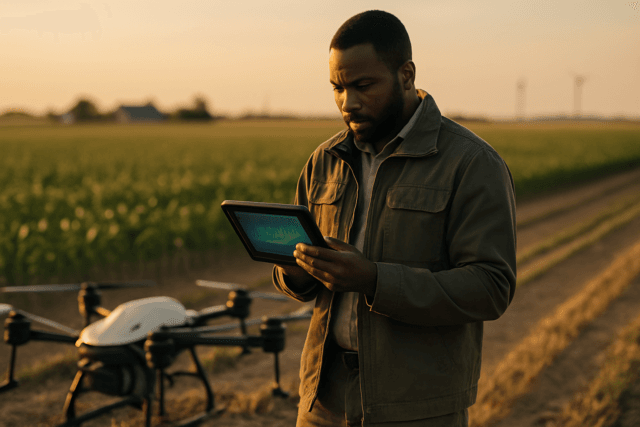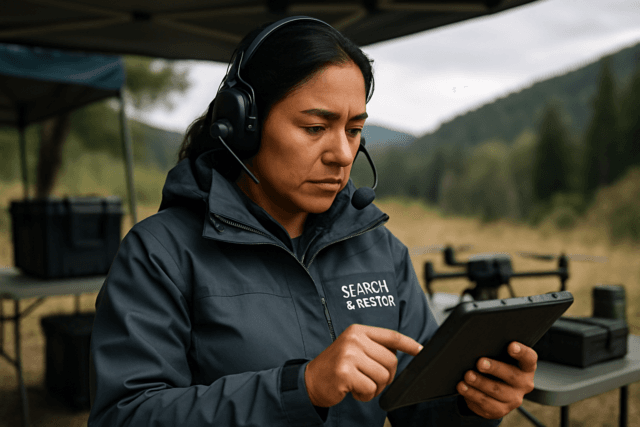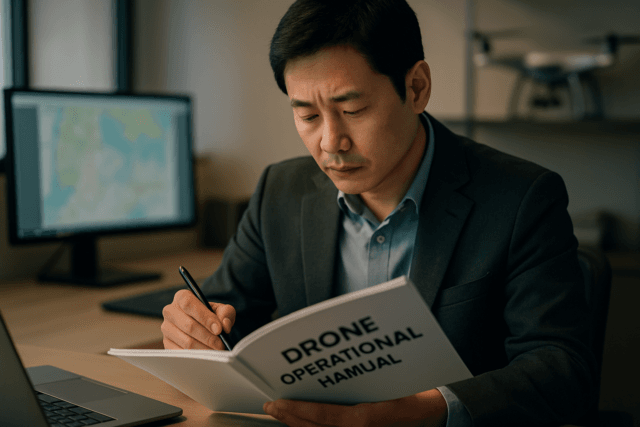In the wake of natural disasters, conflicts, or other large-scale crises, the rapid establishment and secure management of temporary shelters are paramount. These makeshift communities, designed to provide immediate relief and safety, often face significant security challenges, from managing access and preventing theft to monitoring the health and well-being of displaced populations. Unmanned Aerial Vehicles (UAVs), commonly known as drones, are emerging as a transformative technology, offering an aerial advantage that dramatically enhances surveillance, security, and operational efficiency in these vulnerable environments.
The Critical Need for Security in Emergency Shelters
Emergency shelters, whether they are tent cities, converted public buildings, or refugee camps, become temporary homes for thousands, or even millions, of individuals displaced by unforeseen events. The sheer scale and often chaotic nature of their setup, combined with the vulnerabilities of a dislocated population, make these locations susceptible to a range of security threats. These can include unauthorized entry, internal conflicts, theft of aid supplies, and challenges in locating missing persons or identifying individuals in distress. Traditional ground-based security measures often struggle to cover vast areas quickly and effectively, making a compelling case for innovative solutions.
How Drones Enhance Shelter Security Operations
Drones, with their versatility and ability to access hazardous or remote areas, are revolutionizing humanitarian aid and disaster response, including the critical aspect of shelter security.
Aerial Surveillance and Perimeter Monitoring
One of the most immediate and impactful applications of drones is providing comprehensive aerial surveillance. Drones can offer a bird’s-eye view of the entire shelter area, enabling real-time monitoring of perimeters and entry points. This aerial perspective allows security teams to detect unusual activities, identify potential breaches, and track movement within and around the camp, far more efficiently than ground patrols alone. Advanced sensors, including high-resolution cameras, thermal imaging, and zoom capabilities, allow operators to detect and recognize targets of interest even in low-light conditions or over long distances.
Damage Assessment and Resource Allocation
Beyond security, drones are invaluable for rapid damage assessment of the shelter infrastructure itself, or the surrounding environment affected by the emergency. They can capture high-resolution images and videos, providing real-time data to emergency responders and aiding in prioritizing rescue operations and resource allocation within the shelter area. This data helps ensure that aid and personnel are directed to where they are most needed, optimizing the use of limited resources.
Deterrence and Rapid Response
The visible presence of drones can act as a significant deterrent to potential security threats. Furthermore, if an incident occurs, drones can provide immediate situational awareness to first responders, reducing response times and offering critical real-time information before personnel arrive on the ground. Some emergency response drones are equipped with loudspeakers, allowing operators to communicate directly with individuals on the ground, broadcasting instructions or warnings across a wide area.
Search and Rescue Integration
In the chaotic aftermath of an emergency, individuals may become separated from their families or lost. Drones equipped with thermal imaging cameras can quickly locate missing persons, even in hard-to-reach areas or at night, significantly increasing the chances of saving lives. This capability extends to assisting in search and rescue missions around temporary shelters, ensuring that all residents are accounted for.
Key Benefits of Drone Deployment
The strategic integration of UAVs into emergency shelter security offers several compelling advantages:
Enhanced Situational Awareness
Drones provide an unparalleled level of real-time situational awareness, giving security and aid organizations a comprehensive overview of the shelter environment, its occupants, and any developing threats. This allows for more informed decision-making and targeted resource allocation.
Cost-Effectiveness and Efficiency
Compared to traditional manned aerial vehicles or extensive ground patrols, drones can be a more cost-effective and efficient solution for surveillance and monitoring. They can cover large territories swiftly, reducing the need for numerous personnel in potentially hazardous areas.
Reduced Risk to Personnel
Deploying drones minimizes the exposure of human security personnel to dangerous or inaccessible environments, such as areas with damaged infrastructure or ongoing hazards. This significantly enhances the safety of responders.
Data Collection and Documentation
Drones can collect extensive high-resolution data, including imagery and video, which is crucial for post-incident analysis, damage assessment, and documentation for aid distribution or future planning. This data can also assist in forensic analysis if security incidents occur.
Challenges and Considerations
Despite their immense potential, the deployment of drones in emergency shelter security contexts comes with significant challenges that must be carefully managed.
Regulatory Hurdles and Airspace Management
Operating drones in emergency zones often involves navigating complex regulatory frameworks and managing airspace, especially for Beyond Visual Line of Sight (BVLOS) operations which are typically restricted without special permissions. International regulations and local policies must be addressed to ensure responsible and lawful drone usage. Organizations like the FAA are working on new rules to enable more routine BVLOS operations for disaster response. Furthermore, drones must avoid hampering emergency services already operating in the area.
Privacy Concerns
The use of surveillance drones in any setting, particularly those housing vulnerable populations, raises significant privacy and data protection concerns. It is crucial to establish clear guidelines on data collection, storage, and access, ensuring that surveillance is proportionate, transparent, and does not lead to misuse or “function creep” where data is used beyond its stated purpose. Community engagement and robust privacy impact assessments are essential to build trust.
Technical Limitations
Drones are subject to technical limitations such as battery life, which can restrict their operational duration, and vulnerability to adverse weather conditions like heavy wind and rain. GPS signal loss, especially in crowded areas or complex environments, can also force drones into auto-landing mode. While advancements in hybrid power sources and long-endurance models are addressing these issues, they remain factors in deployment. Communication systems also need to be secure against cyberattacks to prevent malicious interference.
Training and Personnel Requirements
Effective and ethical drone deployment requires well-trained personnel for operation, maintenance, and data analysis. Comprehensive training programs are essential to equip responders with the necessary skills for efficient drone operation and to ensure seamless integration into relief operations.
Future Outlook of UAVs in Emergency Response
The role of UAVs in emergency response and humanitarian aid, including securing temporary shelters, is poised for significant growth. Future advancements include the integration of Artificial Intelligence (AI) algorithms for automated data analysis, improving decision-making during crises, and enhancing autonomous flight capabilities. Developments in drone technology are leading to more cost-effective and accessible platforms, increasing their potential deployment in diverse humanitarian scenarios. Furthermore, enhanced endurance, multi-modal transport capabilities, and improved communication systems (e.g., 5G integration for reduced latency and better UAV-to-UAV coordination) will further solidify drones as indispensable tools for humanitarian logistics and security.
Conclusion
The use of drones in securing temporary shelters during emergencies offers a powerful and increasingly essential solution to complex security challenges. By providing unparalleled aerial surveillance, enabling rapid damage assessment, deterring threats, and assisting in search and rescue, UAVs enhance situational awareness and significantly reduce risks to both displaced populations and humanitarian personnel. While addressing the critical challenges of regulation, privacy, and technical limitations is paramount, ongoing technological advancements and collaborative efforts among stakeholders promise to unlock the full potential of drones, ultimately leading to more effective, efficient, and safer emergency response strategies worldwide.





